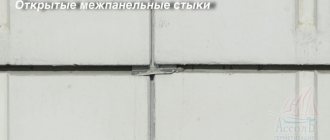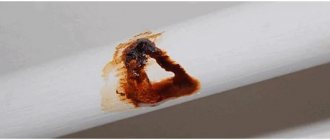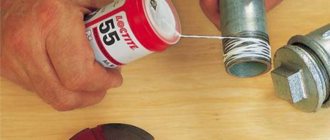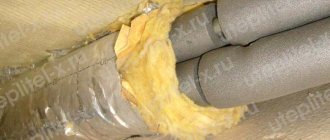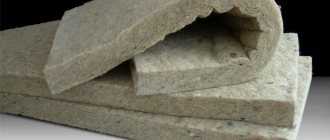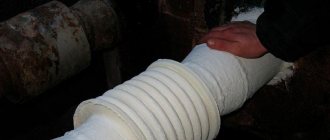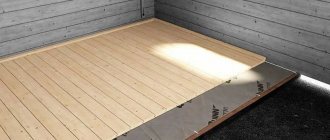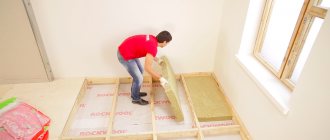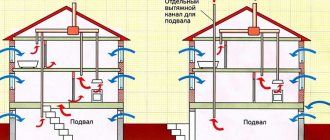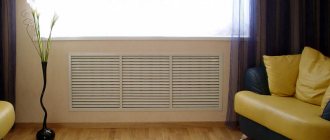Construction sealing materials are intended for primary sealing - when a panel building has just been erected, as well as a secondary type - for carrying out restoration repair work on insulating seams.
A number of specially developed products that have a certain type and chemical composition are used as sealing.
They are presented in mixtures, solutions, foam, are resistant to temperature changes, frost, are characterized by water-repellent properties, protect against extraneous noise and sounds, retain heat, the stability of the slabs in relation to the structure, and also prevent the appearance of fungi.
How mastic and other materials are used for sealing seams, the correct choice, purpose, manufacturers and average price for them can be found in the presented article.
Types of repairs
At the stage of construction of panel houses, the joints are initially sealed and insulated; when the installation is completed, insulation is placed in clean grooves, the joint is filled with mortar and sealed from the outside. At this point, the work is considered completed and the seams are sealed. During the subsequent operation of the building, due to the shifting of the panels and shrinkage of the house, the sealing of the panel seams is broken. From this moment on, the real problems begin for the residents.
Repairs of interpanel seams in panel houses are carried out by industrial climbers. The main goal when sealing seams is to prevent moisture from entering the internal cavity of the seam and to prevent freezing of sealing materials in winter.
The following materials are used for sealing:
- Sealants or sealing mastics.
- Vilatherm.
- Tourniquet (waterproofing).
- Polyurethane foam.
The use of all of the above materials depends on what type of repair is being carried out. If your home is undergoing cosmetic renovations, they will clean the areas of the seams where the mastic has been damaged. If there have been no moisture leaks or freezing, and the insulation has not yet been damaged, then use one sealant or mastic with sealing properties.
But please note that not all organizations and companies on the market for such services do their work efficiently and conscientiously. Some of these use sand-cement mortar to seal joints. Most companies have stopped using bitumen mastic as a sealing material. This is due to the fact that it spoils the appearance of the building, and if it is covered with paint, the latter begins to peel off and fall off over time.
When carrying out major repairs, the joints are opened completely and the insulation material is completely replaced. After this, sealing and painting are carried out. If the technology was followed during repair work, then such connections will last for many years. Yes, the service life of the building as a whole will depend on how the seams are sealed. With a combination of major and cosmetic repairs, we will receive secondary sealing and repair of interpanel seams in panel houses.
Partial seam opening
If part of the coating is damaged or there is no seal behind the cement mortar, it is necessary to partially open the joint between the panels. This method is more reliable than cosmetic repairs. The work is performed in the following order:
- First, the destroyed cement composition is removed. When opening only a certain part of the seam, you need to drill holes in it every 25 cm. In this case, you must use a 10 mm drill.
- Then the empty areas behind the plaster should be filled with foam. To do this, use a construction gun, which conveniently dispenses foam.
- After the foam has hardened, its protruding part must be cut off. The entire seam should be treated with a primer. All areas that have been exposed must be plastered.
At the final stage of work, the joints are treated with bitumen mastic.
Why treat seams in a panel house?
Interpanel seams that have lost their integrity can lead to moisture and air getting between the walls. This leads to freezing of the walls. If technical construction standards are violated and low-quality materials are used, unwanted voids between panels cause a number of serious problems that threaten not only the condition of the building itself, but also human health! Mold, constant dampness and heat loss appear in apartments. Due to the cold walls, the wallpaper will not hold up well and will fall off ahead of time.
In addition, depressurization of interpanel seams can be caused by unscrupulous installation of metal-plastic windows and balconies, or incorrect design of ebbs. Timely sealing of expansion joints is usually carried out once every 9-10 years (depending on the material, of course) and allows you to protect the building from the harmful effects of moisture, wind, low temperatures, and in emergency situations requires the immediate intervention of professionals.
Reasons for poor-quality sealing of joints
There are many different reasons for the appearance of defects in the joints between panels:
- Errors and violations made at the stage of design, calculation and execution of construction work.
- Use of low-quality materials for sealing.
- “Human factor”, that is, elements such as unprofessional sealing, the use of inappropriate materials, theft, and so on.
- Combination of rigid seals with elastic ones. Rigid seals in the form of a solution of cement and sand are destroyed over time, and their particles damage elastic mastics. Sealing materials will last longer if applied to soft gaskets. In this case, the cohesive strength of the gaskets should be lower than the strength of the sealant.
- Joints may lose protection if self-adhesive tape was used in violation of the installation technology. If you pull it too hard, the panels will move when the temperature changes, which will lead to the tape breaking or not fitting tightly. The result is open joints, frozen walls, moisture entering the premises, mold development and a host of other troubles.
- Self-adhesive tapes must be glued with an adhesive bottom layer, because with high-quality sealing of panel joints, minimal stress should be obtained inside the sealing material.
Before starting work, our company’s specialists assess the condition of the joints and identify violations that require elimination.
Results
I am glad that recently more and more residents have begun to realize that with high-quality work on sealing and insulating seams, they will receive comfortable housing without mold and mildew.
from - Assol this is a 15-year warranty on materials, fixed price: from 450 rubles / meter, permanent specialists. As a result: we eliminate moisture from the street, heat loss through cracks and cold spaces; we eliminate the causes of condensation on the walls; we treat problem areas with mold and mildew; improving...
Documents required for work
Sealing of apartments above the 2nd floor is carried out using the industrial mountaineering method. That is, specialists will need free access to the roof to deploy equipment.
To do this, you need to submit an application and a package of documents to the house management organization (Dez, Tsh, Zhsk, Zhilischnik). As a rule, we deliver all the documents ourselves; only a signature is required from the owner.
We recommend: Production of polymer materials using innovative technologies
Package of documents:
- Application for repair of interpanel seams;
- Sample letter of guarantee for access to the roof (guarantee on behalf of our company);
- Certificate of industrial climbers.
Signs of depressurization of seams
Main features:
- low heat and sound insulation;
- drafts in the room;
- getting corners wet;
- freezing of walls;
- mold formation.
If you encounter the above characteristic features, we recommend that you immediately contact a specialized organization to inspect the facade of the building. In the overwhelming majority of cases, these activities are carried out at high altitude using the industrial mountaineering method and require the involvement of appropriate specialists.
Among the reasons for the violation of seam tightness, experts most often name:
- Wall deformation associated with leaks at vertical joints. In winter, such joints freeze and heat escapes through them.
- Low quality of concrete used in the manufacture of slabs. Over time it may crumble. This leads to destruction right down to the reinforcement frame.
- Violation of concrete slab production technology or non-compliance with current standards. This may lead to the product not conforming to geometric shapes. Because of this, the joint is uneven and has increased dimensions.
- Harsh climatic conditions in the region. Concrete building materials can be destroyed by frost and sudden temperature changes in the off-season.
It is important to know!
To identify defects in slabs, it is necessary to use not only visual inspection, but also special thermal imaging equipment. It shows exactly where there are heat losses associated with depressurization of joints.
Features of the work
Insulation of interpanel seams, in addition to strict adherence to technology, requires taking into account a number of features. Repairs are carried out only if the average daily temperature is at least +5°C. Other weather restrictions include strong wind, fog and precipitation (snow, rain).
It is also necessary to take into account that sealing seams falls into the category of work at height, and therefore can only be performed by specialists with permits, licenses, special equipment and practical experience.
What to do with the joints of the slabs on the ceiling
The question is of course rhetorical. You can eliminate them.
Read below about how to deal with cracks of different depths.
Working with a wide, shallow joint
We are talking about cracks between the joints of the slabs, approximately 30 mm deep. In this case, work to eliminate them is carried out using construction foam. The technology for sealing the seams of floor slabs involves the following algorithm of actions:
- The hole is filled with foam using a mounting gun.
- Give time for the polyurethane foam to set. This is approximately 2-4 hours.
- After which, using a construction knife, the remaining foam is removed. You can leave a small notch - about 5 mm. This will allow the working material to grip better.
- Next, the recess is filled with elastic putty. We work with a spatula with a narrow and wide blade. The putty is applied with the first tool, and the solution is held on a spatula with a wide blade.
- To properly (process) seal the seams, you need to work with a spatula with a wide blade. After applying the mixture, excess must be removed.
Read below about what to do with a wide joint.
Working with a wide joint of great depth
We are talking about seams whose thickness exceeds 30 mm. In this case, the use of polyurethane foam will be ineffective. It is better to use other materials. Waterproofing joints between floor slabs involves the following algorithm of actions:
- Having discovered a deep recess, it is necessary to fill it with heat-insulating material. This can be: polyurethane foam or polyethylene.
- A sealant is used to fix the material.
Note!
It is better to use a sealant that resists moisture as much as possible.
- The subsequent procedure is to seal the wide crack with NTs grade cement. It is necessary to leave a groove. Its depth should be within 5 mm.
- When the cement mixture has dried, latex putty is applied. We use a spatula to level the surface.
Some craftsmen prefer to seal deep joints using ceramic tile adhesive.
Working with deep and narrow joints
The seams of the floor slab in question can be sealed using the method described above. The workflow for filling floor slab joints includes the following steps:
Using a piece of insulation that has been pre-applied with sealant, it is placed in a pre-arranged groove
It is important to close the notch tightly. After tamping, you should leave a small recess, about 10 mm. Depth within 5 mm. The space is filled with NTs brand cement. After the cement mixture has hardened, latex putty is applied
We use a spatula to level the applied solution. In addition to the activities listed above, you need to perform a number of operational actions, which will be discussed below.
After the cement mixture has hardened, latex putty is applied. We use a spatula to level the applied solution. In addition to the activities listed above, you need to perform a number of operational actions, which will be discussed below.
Insulation of interpanel seams
When a building suffers from heat loss, the old joint must be opened. Typically, interpanel joints are affected by mold and moisture flows into them. Our team acts in such situations as follows:
- the layer of mastic is removed and the insulation that has lost its functionality is removed;
- in the presence of mold damage, antiseptic treatment is carried out;
- the seam is foamed with polyurethane foam;
- Vilaterm is installed as insulation;
- the seam is sealed with sealant.
What materials to use
The gaps between the plates are filled using Polymerfex polyurethane foam. If the Vilaterm tubular type insulation material is selected, it must be laid in bitumen pastes or mastic.
You can moisture-proof the insulation with mastic. It is applied outside the joints. The mastic will protect the insulation material not only from moisture, but also from sunlight. On each side of the seam, the mastic should cover the panel by 3 cm.
In what cases is it necessary to seal interpanel seams in a multi-story building?
If you observe these factors, you need to immediately start sealing the seams. Otherwise, an unpleasant odor, humidity and mold, which has a detrimental effect on human health, will constantly be present in the apartment. The seams should be treated both externally and inside the house between the walls of the apartments. Previously, rubber or tow was used to seal seams in a panel house. There are now many different sealants that make sealing work easier. It is worth knowing that you need to use only elastic means so that when the slabs shrink and “movement,” the seam will hold firmly. And one of the most popular sealants is Neomid Mineral Professional.
What is primary lubrication?
When considering the topic of preventing disruption of the expansion of seam gaps between panels and timely repair of cracks on the wall, they always talk about sealing - a necessary stage of construction or restoration work.
can be primary or secondary
Secondary sealing refers to a type of repair work that is used during the operation of the building if, upon inspection of the wall surface, deficiencies are discovered that require urgent elimination (about the repair of external seams in a panel house - here).
Primary sealing helps to reliably fasten the panels together, protect the layers of the wall pie from external negative influences from the street, as well as the room.
Ice is especially dangerous because it expands the space between the tiles and deforms the material from which the tile structure is built - this disrupts the geometry, and when the ice melts, it forms areas of dampness. Therefore, any type of panel, even monolithic, necessarily needs sealing of the joint space, which protects the building from destruction.
Primary sealing for a new house can extend the life of the walls, prevent excessive moisture formation and mold, and protect against extraneous noise and sounds. Sealing is also needed to prevent damage, protect against insects, and strengthen the joint wall space.
Secondary sealing can be used after 5-7 years
Internal sealing prevents the formation of unpleasant odors and sharp sounds in the rooms and prevents the entry of rodents. Insulated joints not only prevent heat loss, but also provide the house with stability in the event of excessive seismic activity.
Technology for sealing interpanel seams
Sealing of interpanel seams of buildings is carried out in accordance with SNiP 3.03.01-87
.
The work is carried out using the industrial mountaineering method. Only climbers with permission to work at heights and who have the appropriate certificates can work.
We use materials agreed upon earlier in the project and specified in the estimate (foam, insulation, sealant).
Before carrying out work, the joints are first cleaned of dirt, dust, excess concrete and must be dried.
Insulation of interpanel seams with polyurethane foam occurs at ambient temperatures from -20 °C to + 20 °C.
After applying the foam, it is necessary to quickly (within 2 hours) install Vilaterm bundles. The liners must fit tightly to the surface of the well along the entire height of the joint and be secured.
There should be no gaps at the joints of thermal insulation liners. The gaps between the liners are filled with material of the same volumetric mass.
Harnesses at the mouths of closed and drained joints should be installed dry (without coating with glue). Where closed joints intersect, sealing gaskets should first be installed in horizontal joints.
To insulate joints, it is necessary that the mastic temperature be from +15 °C to + 20 °C. In winter, the temperature of the applied mastic is determined by the manufacturer. Application of mastic to wet, frozen or icy surfaces is not allowed.
Methods and technologies
Sealing work involves insulating the seam cavity and waterproofing it. Initially, the panels may have chips or unevenness on the surface. But even if the geometric deviations in shape are only a couple of millimeters, the risk of moisture penetration into the joints increases significantly.
The space between the panels should be insulated, which will avoid the formation of “cold bridges”. The top of the joint is insulated with a waterproof mixture. Such work should be carried out during the construction stage of the building. Although they are usually done purely nominally - they cover the seam with cement. Over time, under the influence of the environment, it collapses, and then whole pieces fall out of the joints. Water and frosty air immediately penetrates inside. There are 3 methods.
| Technology | What is included in the list of works? |
| Plaster joints | The seam is sealed superficially; the process does not remove old sealant or cement; the waterproofing is applied directly to it. The most budget option, which is suitable only for cases where the insulation is not damaged and has retained its performance characteristics. |
| Waterproofing the joint | It is carried out with preliminary removal of worn mastic. The previously used insulation is partially removed if it has already lost its properties. It is replaced, after which the joint is sealed with mastic on top. |
| "Warm seam" | The joint is completely cleaned and recreated from the very beginning. Construction foam, insulation and waterproofing mastic are used. |
It is important to know!
The cost of the work usually depends on the size and number of joints that have become unusable, as well as whether they have been waterproofed previously. There are primary and secondary sutures. But the most correct approach is considered to be an integrated approach, which allows you to maximize the energy efficiency of the building and protect the walls from moisture penetration. This technique is called "warm seam"
Warm seam
The most effective option for sealing joints. The seam is completely cleaned and done from scratch. This is reliable protection against moisture and freezing. Homeowners and apartment owners always order it because they make their homes energy efficient for themselves.
Execution steps:
- The joint is completely unstitched. In the case when it is plastered, gating is used. All debris is removed and dust is blown out.
- If there is mold on the walls of the apartment, then the joint is treated with a special compound to prevent its re-spread.
- The joint is blown out with polyurethane foam. It fills existing voids and penetrates even microcracks, sealing them reliably.
- Insulation (Vilaterm) is installed. It plays the role of a heat insulator and also dampens vibrations.
- A layer of mastic for external sealing with a thickness of at least 3 mm is applied. It protects the surface from moisture.
When carrying out work on arranging a “warm seam”, industrial climbers must follow the rules described in the regulatory documentation:
- SNiP 3.03.01-87 Load-bearing and enclosing structures;
- TR 196-08 Technical recommendations on the technology of sealing and sealing joints of external wall panels;
- Technical instructions for sealing joints.
It is important to know!
Work is prohibited if the street temperature is below -5 degrees. They should be postponed if it is snowing or raining outside.
Primary sealing
It is carried out in new houses immediately after completion of construction work. For thermal insulation, the joints are filled with Vilaterm. Mastic is applied on top to serve as waterproofing.
Stages of work:
- Surface preparation. Removing dust and dirt.
- Hollow insulation is laid. Cuts are made on it at a distance of 20 cm.
- Foam is blown through the slots.
- A layer of mastic is applied.
Regulations:
- TR 196-08 Technical recommendations on sealing technology. and sealing joints;
- VSN 40-96 Instructions for sealing. joints of walls and window blocks.
Secondary seal
The technology is used when processing old joints that have previously been insulated or sealed. Partial or complete replacement of the insulation can be carried out, depending on the degree of its wear.
Stages of work:
- Cleaning the seam from insulation (if necessary).
- Removing contaminants inside the joint.
- Blowing with construction foam and placing insulation.
- Sealing the seam from the outside. High quality mastic is used.
During secondary sealing, climbers are guided by the following standards:
- SN 420-71 Building codes and regulations for sealing. interpanel seams;
- VSN 19-95 Instructions for the technology of sealing butt joints of external wall panels.
Materials for sealing seams
To seal seams, we use only high-quality materials that we have been using for many years, the technology for working with which has been proven, and we know how they behave after 5-10 years.
Vilaterm
It is primarily a thermal insulation material, as its name suggests, but also provides sound and vibration insulation. It is manufactured specifically for sealing interpanel seams of different diameters. It is selected for the seam - the diameter of the vilatherm should be one or two centimeters larger than the width of the seam, so that, on the one hand, it completely covers the seam, and on the other, it is not too flattened. Vilaterm, manufactured using modern equipment, is environmentally friendly, made from high-density polyethylene by foaming with a butane-propane mixture.
Construction foam
We use professional construction foam. At negative temperatures, we use Norwegian foam - there is nothing better in the cold. Its use allows us to work safely up to 15 degrees.
At positive temperatures, we most often use German professional foam.
Warm seam technology
The highest quality way to seal interpanel seams is this technology. Its cost is quite high, but the result lives up to expectations. The work is carried out according to a simple scheme:
- The interpanel seam should be opened along its entire length. The old sealant must be completely removed. The entire surface of the seam is treated with a primer.
- Then the seam should be filled with foam. It must be remembered that it can triple. That is why the foam should be applied to the depth of the seam. It is necessary that it fills about a quarter of the thickness of the panel.
- When the volume of foam begins to increase, it is necessary to lay Vilaterm in the joint - this sealant is made of polyethylene.
- Thanks to this, the foam will not come out. This seal is sold as hollow tubes. However, there are often continuous options. Vilaterm can have dimensions exceeding the dimensions of the seam by 10%. It must be installed in the desired place with a spatula. It should be slightly pressed into the mounting foam.
- It is better if the Vilaterma roller is located at the same height as the outer edge of the panel. After sealing the seam, you just need to apply water-repellent mastic to it.
This technology for sealing joints today is the most effective way to repair the external surfaces of panel houses. When choosing this method, the work efficiency is the highest. The seam is insulated, becomes waterproof, and also protected from precipitation. This allows you to increase the service life of the entire house.
Sealing of interpanel seams in multi-storey structures is carried out by professionals. It is possible to conduct experiments only at the level of the first and second floors - if the scaffolding is secure. In other cases, it is necessary to call industrial climbers.
Primary and secondary sealing of seams in panel houses.
Primary sealing of seams
called sealing of previously unsealed seams.
Currently, most houses are delivered to developers with sealed seams. Secondary sealing
is a cosmetic or major repair of the sealing of interpanel seams, depending on the degree of destruction.
Cosmetic repairs and sealing of seams in panel houses.
Cosmetic repairs and sealing of seams include cleaning the edge of the seam from old sealant and applying new sealing mastic to the joint of the slabs. Cosmetic repairs to seam sealing are carried out if the old layer of sealing mastic has cracked or partially fallen off. But at the same time, the insulation inside the seam has been preserved, and there are no leaks or freezing of the walls in the room, or other signs of defects in the seams.
Major repairs and sealing of seams in panel houses.
Major repairs and sealing of interpanel seams include a complete replacement of the insulation in the seams between the panels, followed by sealing the joint between the panels. If there are local signs of defects in the sealing of the seams, it is possible to carry out a combined repair of the sealing of the seams.
Advice from the experts
In old houses and apartments there are almost always areas contaminated with mold. To get rid of it, it is recommended to carry out anti-mold treatment of the fireplace before sealing. The result will be more effective if you further dry the walls with a heat gun.
In addition to sealing interpanel joints, it is worth paying attention to other sources of heat loss: old glass windows, low-quality doors, an uninsulated roof, an uninsulated attic (in a private house). Through such zones, up to 20% of heat can be lost, and additional sealing of windows and doors, as well as interpanel seams, will seriously improve the indoor microclimate and make living more comfortable!
Repair technology for interpanel seams
Insulation of interpanel spaces is carried out in several stages according to a certain technology. The appearance of deformation changes forces us to open the grooves between the panels and carefully inspect them. If the house is still under warranty, all repair work is carried out by the developer. Old buildings are usually processed with the assistance of third-party specialists from the field of industrial mountaineering.
The services of climbers are required to seal external seams at high altitudes (3-4 floors and above). Independent work is practiced at the level of the first or second floor in the presence of reliable scaffolding. The technological stages of sealing wall joints are as follows:
- Preparation. All surfaces are cleaned from dust, dirt, and paint residues. The seams between the panels are being cut.
- Foaming. The seams are filled with polyurethane foam - a reliable heat-insulating material, which, after curing, expands and fills even small voids.
- Insulation. Street seams are covered with the selected insulation (usually the “vilatherm” type).
- Final processing. A mastic sealant is applied to protect the insulation from external influences.
We recommend: High-quality plasma cutting of metal from the Weighing Equipment Plant
All work on processing seams outside buildings is carried out at -10...+30 degrees and only in dry weather. If you neglect this rule, the sealing layer will not last long. Sometimes, if repairs from the outside of the house are impossible, the seams have to be insulated from the inside of the apartments. In this case, the grooves are foamed and sealed with insulation and then sealant. If the condition of the sealing material is satisfactory, you can limit yourself to incomplete cleaning of the seam and only foaming.
Primary sealing of the external seam
Primary sealing involves treating interpanel seams in new houses. Most often, the same “vilatherm” is used in the form of polyethylene foam tubes. It is characterized by high elasticity, good thermal insulation properties, and is easy to install. Also, instead of this material, polyurethane foam can be used, but in any case, the top layer should be mastic, which acts as a waterproofing material for the house
Secondary sealing of external interpanel joint
Secondary sealing refers to the repair of internal or external seams that have lost their integrity and strength during the operation of the building. The only difference in technology is the additional cleaning of joints from remnants of insulating material. It is recommended to assess the condition of the seams every 5-7 years and repair them in a timely manner.
Repair without opening the joint
This type of work is only possible if the condition of the seam surface is satisfactory, so first it must be carefully inspected. The top layer - mastic - will still have to be removed. It happens that there is a cement composition inside, in which case the joint most often retains its integrity. The steps to seal the seam will be as follows:
- treat with a deep penetration primer with antifungal components;
- repair holes, chips, and any defects in the foundation with cement mortar;
- Apply a layer of waterproof mastic (one- or two-component), after covering the front edges of the panels with strong tape.
Partial seam opening
This repair method is used if the seal is partially destroyed or the outer covering of the joint has lost its strength. Compared to cosmetic procedures, this method is more reliable. The sequence of work is as follows:
- remove the destroyed parts of the cement composition, drill holes in the rest of the layer every 25 cm (use a 10 mm drill);
- fill empty areas with polyurethane foam;
- wait for the foam to dry, cut off the protruding parts;
- apply primer, let dry;
- plaster the seams and dry;
- treat with bitumen mastic.
Warm seam insulation technology
The use of this technique will allow you to insulate the walls most reliably and efficiently. It is considered three-component and quite complex, requiring more time than simple cosmetic repairs. First, the seam is prepared, then the main work:
- the joint is opened completely, along its entire length;
- even small pieces of old insulation, cement, foam are removed;
- if this is required, cement restoration of the coating inside the seam is carried out (when the panels themselves are damaged);
- priming is carried out with a composition with deep penetration;
- the space is filled with polyurethane foam approximately ¼ of the volume of the gap (the material will expand greatly subsequently);
- Immediately after the process of increasing the polyurethane foam in size begins, polyethylene foam is laid end-to-end in the form of a bundle of the required width (this will eliminate the need for cutting the foam).
Installation of insulation is done using a spatula - the material is carefully pressed into the foam. It is desirable that the strip is continuous, without breaks, approximately 10% wider in width than the seam itself. It is necessary to work with polyethylene foam carefully; it is easily damaged. After completing the work on arranging warm joints, you need to evaluate the result: the boundaries of the slabs should be at the same level as the sealed joint. Next, bitumen mastic is applied, which will prevent moisture from entering the joint.
How can I cover cracks and joints?
The choice of material for panel walls is best left to professionals. Each type of slab has its own sealing agent .
For example, SIP and sandwich panels are perfectly combined with ready-made sealant compositions (polyurethane, acrylic).
Monolithic slabs are sealed with cement mortar based on strong grades of Portland cement (M500 and higher), as well as a second layer of bitumen mastic, which provides additional waterproofing.
In addition, to seal the seams along with the compounds, special construction cords with a polyethylene base, which are considered insulation, are also placed in degreasing.
Thermal insulation tapes, represented by cords and tubes, retain mastic and other mixtures in the seams, additionally strengthen the space between the tiles, and eliminate cold bridges.
It is best to purchase sealing materials in specialized stores, including on websites from trusted manufacturers.
The product must:
- have a date of manufacture;
- established storage period and conditions;
- quality certificate;
- trademark according to the nomenclature of the Russian Federation;
- instructions for use and warranty.
The packaging must provide a detailed description and composition of the substance . The industrial product itself must be hermetically packaged.
There are many different types of sealants available on the construction market. The most popular are mastic, silicone compounds, and polyurethane foam. All these products combine well with any materials and are selected according to the width of the seams.
For example, for wide joints it is best to use expanding compounds; for deep recesses, polyurethane foam is more suitable. But sometimes the composition is individually selected for certain types of panels.
When choosing the material required for sealing, much attention is paid to its ductility. It is this quality that is one of the main qualitative characteristics, which allows the substance to be evenly distributed throughout the crack and fill the existing surface pores.
Methods for repairing joints
The method of repair depends on the degree of damage to the joint.
Caulking seams
This method is used when there is minor damage to the seal, there is no significant displacement of the plates relative to each other and the integrity of the insulation is maintained.
The seal is covered with sealant over the old layer. The composition penetrates well into small cracks and restores the integrity of the layer.
Putty is usually used during cosmetic repairs.
Waterproofing works
This is a serious joint repair. The joints are completely cleared of the old layer of sealing compound, and it is reapplied. Before application, the surface of the slabs is dried and degreased. This method does not provide for insulation of the seam. The most popular sealing compounds are polyurethane based. They operate in a wide temperature range from -45+75°C, have good adhesion and last up to 10 years. Optimal for filling vertical joints, protecting them from drafts and moisture. In rooms sealed in this way, an increase in humidity and the appearance of fungus or mold are excluded. For horizontal joints, additional insulation is required.
Sealing of interpanel seams
Warm seam
In modern high-quality panel houses and in the renovation of old buildings, the progressive “warm joint” technology is widely used. Hollow tubes of foam plastic insulation are placed into the seam, filling the entire gap space. Potholes and chips are additionally filled with polyurethane foam, achieving 100% filling. A layer of sealant is applied on top of the insulation, reliably fixing the thermal insulation and protecting the joint from the effects of weather conditions. The method is applicable for both vertical and horizontal joints.
Why do seams break and what are the consequences?
The joint between panels is the weak point of any panel structure. It is these seams that mainly suffer from the influence of meteorological factors, such as sudden temperature changes (frequent transitions through zero), constant high humidity in winter (relevant for the entire Moscow region). In summer, the seams between the panels dry out due to exposure to ultraviolet rays (direct sunlight). Therefore, cracks and mold often appear at the joints of the slabs, leaks occur, and air and moisture pass through in winter. Due to such damage, condensation and excess moisture appear in the space between the panels, and drafts and fungi appear in the rooms, humidity increases and the temperature in the room decreases.
What do we use to seal and repair seams?
Our team of industrial climbers is ready to offer you high-quality and affordable services for sealing and repairing seams in stone, brick, panel, block and other houses of any series. All work is carried out using certified safe and modern materials. The materials we use are frost-resistant, durable and environmentally friendly. Collaborative work can be done at any time of the year.
We have the most favorable conditions
We can offer a flexible payment system, moreover, the cost of our work is no higher than that of our competitors, and for some services we can offer you even more favorable prices!
Sealing loggias and balconies
In all panel houses, loggias and balconies often leak and are blown out. The main problems of loggias and balconies of panel houses:
— Loose and leaky junctions and joints of double-glazed windows in glazed loggias. - Loose and leaky connections and joints around the loggia or balcony. — The drip linings are missing or installed incorrectly. — Worn soft roof of the loggia.
We recommend: Glass apron for the kitchen
Leaky seams and joints of double-glazed windows and walls in glazed loggias are sealed in the same way as in the joints of window frames and panels. Sealing of a loggia or balcony is carried out using standard technologies for sealing seams between panels. And the replacement of the soft roof of the loggia is carried out using standard technology for installing a soft roof made of waterproofing materials.
Consumables and tools for insulation
To insulate and seal joints in panel houses, you will need the following consumables:
Wire brush (for thorough cleaning of areas that require sealing).- Sandpaper (for polishing the mortise).
- Industrial vacuum cleaner (to remove residual dust and dirt that may seep between the plates, as well as residual solution).
- Solvent (for degreasing the seal area).
- Primer (if necessary, most often used for secondary sealing).
- Sponge (apply the solution and rinse with water).
- Spatula (for laying mortar between slabs).
- Broom, rags (for cleaning).
- Masking tape (for cleaning the joints of sealed panels).
- Construction knife (for trimming protruding polyurethane foam residues).
The most important material to buy is sealant or putty. If you plan to seal with cement-sand mortar, take a ready-made dry mixture (cement, sand, plasticizers) or each substance separately, then mix in the required proportion.
Link. For some materials, fungicidal compounds are used to additionally protect joints from mold penetration.
Nuances of internal thermal insulation of seams
Internal thermal insulation of interpanel seams with sealant or polyurethane foam is not a full-fledged method of combating cold and dampness and can only be considered as a temporary measure. The fact is that with such thermal insulation, the entire thickness of the slab continues to freeze in the area of the seam, the dew point moves closer to the living quarters, and the moisture accumulating in the joint continues its destructive effect. At the same time, there is an inevitable increase in the humidity of cold areas of the walls, condensation of moisture on them and, ultimately, the appearance of fungus or mold.
At the first opportunity, care should be taken to ensure complete thermal insulation on the outside of the building.
Signs of leakage
The destruction of materials filling the internal space of the joint between panels rarely goes unnoticed, as it is accompanied by depressurization of the seam, which entails a huge number of problems that negatively affect the comfortable living conditions of all residents of a condominium residential building. Residents of these houses literally physically feel such problems, since they are in the air, are reflected on the walls of the apartments, and negatively affect the well-being and health of apartment residents, especially children and the elderly.
The main factors indicating a violation of the tightness of seams in a panel apartment building include the following:
- The occurrence of a leak or frostbite in the area of the joints, which indicates their significant deformation.
- There is high humidity in apartments.
- Peeling of wallpaper, the appearance of mold and mildew on the surface of the walls.
- Deterioration of the microclimate due to humidity, mold, dust and polluted air from the street.
- The appearance of drafts that can be felt even with closed windows and doors.
- Violation of the temperature regime, increased heating costs in winter and high air conditioning costs in hot weather.
Typical mistakes in sealing joints between panels
Experts have listed a number of common mistakes made when insulating interpanel seams:
- using insulation of insufficient or too large diameter;
- incomplete removal of remnants of old insulation;
- leaving the polyurethane foam exposed to sunlight;
- application of sealant on littered, damp, not degreased surfaces;
- insulation of joints from inside the room while leaving the outer seam uninsulated and not sealed.
Using insulation with a diameter that is too large is a possible mistake when insulating interpanel seams.
Such mistakes are often made when carrying out work independently or when involving low-skilled performers.
High-quality insulation of seams in panel houses allows you to achieve comfort and coziness in a panel house comparable to a brick building. Joints require periodic inspection and checking the quality of sealing. If defects are detected in a timely manner, minor cosmetic repairs can be done. In case of serious damage, a complete replacement of the insulation will be required.
How to seal a shallow interpanel seam
Small interpanel seams can be repaired with simple cement mortar. If it's just aesthetic and doesn't blow anything out of the seam, then that's enough. If you missed a seam, then most likely you need to embroider it and first contact the management company so that they can see from the outside what is wrong.
If nothing is missed, for reliability and plasticity of the structure, you can pour polyurethane foam into the seam if the tip of the gun (or hose) enters the seam. The main thing is to leave room for plaster.
Seam sealing services and additional work
Primary sealing “warm seam” from 330 RUR/m2 Calculate cost Seamless waterproofing of roofs from 700 RUR/m2 Calculate cost Sealing of balcony roofing from 1500 RUR/m2 Calculate cost Sealing of balconies and loggias from 250 RUR/m2 Calculate cost Elimination of building defects from 250 RUR/m2 Calculate cost Insulation of facades from 200 RUR/m2 Calculate cost Secondary sealing without opening old seams 130 RUR/m2 Calculate cost Secondary sealing with partial opening of old seams 200 RUR/m2 Calculate cost Sealing of windows and double-glazed windows from 800 RUR/m2 Calculate cost Removal of fungus from 450 RUR/m2 Calculate price
Our prices
The exact cost will depend on many factors, including the urgency and scope of work. Continuous sealing
Unit units up to 10001001-5000Over 5000
| Primary sealing using “warm seam” technology (filling voids with polyurethane foam, installing Vilatherm, coating with mastic) | m.p. | from 250 | from 180 | Great Dane |
| Secondary sealing of interpanel seams without opening (removal of the top layers of sealant for maximum adhesion, application of sealant) | m.p. | from 120 | from 90 | Great Dane |
| Secondary sealing with partial opening of the old seam (opening seams in local places, installing vilatherm, coating with mastic) | m.p. | from 280 | from 260 | Great Dane |
| Secondary sealing with 100% opening of the old seam (opening the seam, patching out the contents, filling the voids with polyurethane foam, installing vilatherm, coating with mastic) | m.p. | from 320 | from 280 | Great Dane |
Selective sealing
Unit units up to 10001001-5000Over 5000
| The cost of work is determined individually based on the volume of work, the locality of the placement of “working” joints on the building, and the type of sealing. | m.p. | Great Dane | Great Dane | Great Dane |
Sealing seams using injection method
Unit units up to 10001001-5000Over 5000
| Secondary sealing of interpanel seams without opening using the injection method (removing the top layers of sealant for maximum adhesion, injecting mounting foam along the entire plane of the seam, applying mastic) | m.p. | from 280 | from 260 | Great Dane |
Waterproofing of expansion joints
As for the purpose of expansion joints, they are usually provided to compensate for overloads on structural elements of buildings that arise as a result of temperature changes or seismic movements.
Typically, typical waterproofing of expansion joints is done using crushed stone and bitumen. However, this requires careful adherence to all waterproofing technology, otherwise the water will subsequently be able to find a free channel for itself.
The technology for waterproofing expansion joints is as follows:
- Before carrying out waterproofing work, the walls at the locations of the insulated joints should be dried as much as possible. If possible, this should be done during a warm and dry period.
- Next, crushed stone is poured into the expansion joint cavity. It is important that the filling material is dry. It is not recommended to pour a thick layer of crushed stone at once; it is better to do this gradually in several stages.
- A pre-prepared bitumen solution is poured onto the filled layer of crushed stone. It should fill all the free space remaining between the fractions of crushed stone.
- Then, on top of the previous layer of crushed stone with bitumen, the next layer of crushed stone is poured and also filled with bitumen. The operation is repeated as many times as necessary until the seam is completely filled. This filling method allows you to obtain a more uniform waterproofing layer.
Scheme of waterproofing interblock seams
In order to waterproof expansion joints in structures, more modern and advanced materials are often used, which do not require the joint to be completely dry. These types of gel-forming systems contribute to reliable protection of moisture penetrating into the room .
